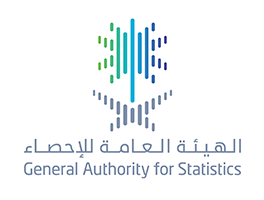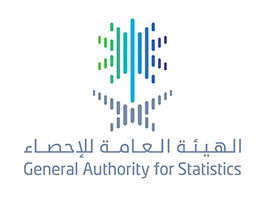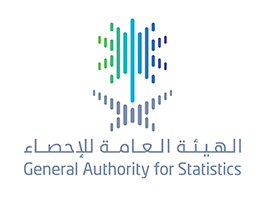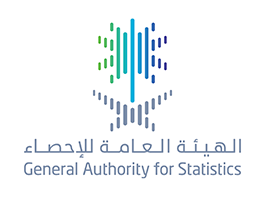“The Role of Saudi Woman in Development” conference announces the indicator of woman development with five axes and (56) variables to support decision makers
05-05-2019
With a collaboration between the National Observatory for Women, General Authority for Statistics, and Alwaleed Philanthropies
“The Role of Saudi Woman in Development” conference announces the indicator of woman development with five axes and (56) variables to support decision makers
On Saturday 22nd of Shaaban, 1440 H corresponding 27th of April, 2019, Minister of Labour and Social Development, Engineer Ahmed bin Sulaiman Alrajhi opened The conference of the Role of Saudi Woman in Development (Towards a Dynamic Society) in Riyadh. The conference was organized by the National Observatory for Women in King Saud University, General Authority for Statistics, and Alwaleed Philanthropies, with the participation of UN Woman. The National Observatory for Women’ indicators were launched in this conference. These indicators are considered tools that support the periodical measurement of Saudi woman participation in development. They are also considered one of the tools for developing strategies related to woman in Saudi Arabia to ensure the role of Saudi woman in development towards a dynamic society. These indicators complement all the National Observatory for Women’ previous indicators. However, the indicator that was launched today contains (56) variables distributed on five main axes; educational axis that supports the future of generations, health axis which concerns society protection, organizational axis which supports progress, economic axis for financial, industrial, and economic leadership in Saudi Arabia, in addition to the finally added one which is the social axis that contains the indicator of woman participation in development.
At the opening of the conference, Minister of Labour and Social Development asserted that (Saudi Vision 2030) has determined the road map and specified all national goals that empower woman, so that she becomes a real and active partner in developing our country. The vision also has developed executive programs and initiatives which will transfer all our hopes into real achievements. He added, we believe in women empowerment in our country with total conviction that is derived from the Islamic principles which give woman all her rights while offering her psychological and social protection. Since the foundation of our country, and its recent take off, the government has paid attention to woman basic rights and needs. To achieve this tendency, women empowerment programs have been designed especially in labour and education. Saudi woman nowadays registers high scores in both work and education. Moreover, she participates in many outstanding scientific research both locally and internationally. She also succeeds in the business sector, in addition to the management of corporations, banks and non-profit associations.
For his part, GATAT president, Dr. Fahad bin Sulaiman Altekhaifi indicated that the United Nations approved The Eight Millennium Development Goals (MDGs) until 2015. Many countries prepared reports to measure what goals have been achieved based on the issued official statistical indicators (either issued by official statistical entities, statistics of government entities, or statistics of international organizations). This experiment has undergone assessment and development. Committees and work teams have already started working on new SDGs until 2030 with (17 goals), and Saudi Arabia was one of the first countries who addressed SDGs. The SDGs governance was set by the Ministry of Economy and Planning (MEP) as the responsible entity for SDGs file, the General Authority for Statistics (GASTAT) as the responsible entity for building statistical indicators, in addition to other government ministries, authorities, and institutions which contribute in the planning and implementation of these goals in accordance with their nature of work. SDGs were also considered within the national strategies (Statistical indicators within the National Strategy of Statistical Development, and other strategies related to household, women, and childhood). As a result, Saudi Arabia submitted the voluntary report– within certain countries- last year in the United Nations. Dr. Fahad Altekhaifi stated that the model of the National Observatory for Women, and the tripartite partnership between the National Observatory for Women ,General Authority for Statistics, and Alwaleed Philanthropies for the survey study which included 15 thousand households from different Saudi regions- in addition to the works of this conference- represent an ideal model of the developmental Saudi administrative work Which affirms that the collaboration between different entities paves the way to overcome any challenges and achieve desired goals.
Mohammad Naciri, UN Women Regional Director for the Arab States and Asia-Pacific said that there are false impressions about women in GCC region and in Saudi Arabia particularly. The international media significantly contributed in spreading these impressions based on superficial analyses. He commended the efforts of the Government of the Kingdom of Saudi Arabia on the Women in Development Study. Furthermore, he confirmed that the results of the indicator adopted by (the National Observatory for Women, General Authority for Statistics, and Alwaleed Philanthropies) reflect the lived realities of Saudi women, and show improvement and progress in the fields of health and education.
On the other hand, HRH Princess Lamia bint Majed AL-Saud the Secretary General at Alwaleed Philanthropies pointed out that woman’s development indicator, which is the first of its kind came to express appreciation to the Saudi women’s efforts for their contributions in various fields and sectors. All data included in the indicator will help in launching distinctive initiatives and programs that will identify the social and economic obstacles facing women in Saudi Arabia as well as enhancing the cooperation with local and international partners to increase efficiency in dealing with these obstacles and overcome them with the possibility to measure the improvement and the impact of such initiatives, she added.
The results were based on three factors: first, gathering strong evidence about our current situation and next destination, which will guide us to reach to the target groups in the right place and time. Second, transparency, since we are very keen to share true stories about women in Saudi Arabia and discuss them in clearly to achieve the desired progress as we cannot take effective steps without understanding the full picture of it. Third, partnership that has emerged as a result of the importance of cooperation between the right institutions to reach to the desired results and change; as a matter of fact, this cannot be achieved without an effective collaboration between the relevant parties, HRH clarified.
The vice rector for Planning and Development at King Saud University Dr.Yousif Abdu Asiri mentioned that the National Observatory for Women’s participation in development (NOW) is a great platform that attracted experts of women’s affairs, monitor women’s participation and provide decision makers and relevant entities with results, indicators, statistics, and database to be as a supportive reference for the social research, developmental projects, and for everything related to family and community from regulations, institutions to initiatives. The observatory is consistent with 2030 vision in which it supports human researches and enables the developmental role of them, it became a clear symbol of the institutional research at King Saud University and has achieved a lot in a short period of time besides its effective efforts and positive role. During the opening of the conference, King Saud University has announced the launching of the new website of NOW which provides an interactive platform for researchers to modify the equations to calculate specific relations between the five dimensions of the indicator of woman’s participation in development, or to identify different categories, for example, calculating woman’s participation in development by age group or by educational level or by administrative region.
Additionally, results released in the conference of (Woman’s role in development “towards vital community”) included data provided by the General Authority for Statistics GASTAT which were obtained from field surveys. These data were analyzed by NOW by using a certain methodology and research tools. The results focus on key measurements of international studies related to men and women: health, education, economic opportunities, organizational structure, and social context. The study evaluates a number of variables between 8 to 20 variables in each one of these five dimensions.
The conference held two main sessions and three local sessions with a participation of a number of experts and officials. The first session includes (the main legislations of woman’s participation in development) which discusses: legislations that guarantee woman’s participation in the public judiciary, legislative frameworks of personal affairs, legislative frameworks of woman protection, the role of law in promoting women’s rights, and women’s rights in health care. On the other hand, the second session includes: (social capital and its role in promoting woman’s participation in development) which discusses: social capital “the modern approach to development”, sustainable development between community trust and interrelationships, and the social dimension of “the indicator of woman’s participation in development”. In addition, the local round table session has discussed in its first session the strategies and future aspirations of Saudi women, the second session was about woman’s participation in development from a global perspective, while the third session has showed some examples of woman’s participation in development.













